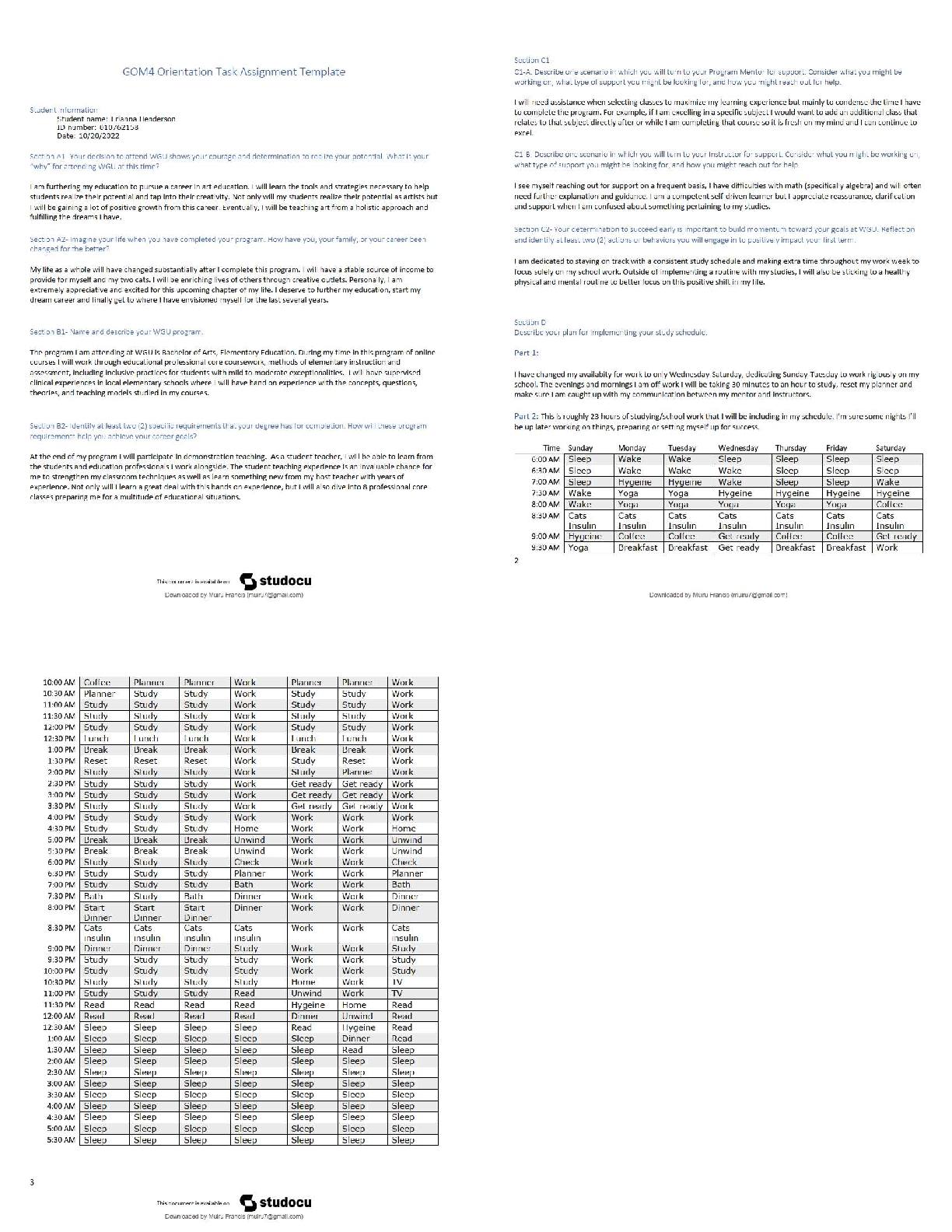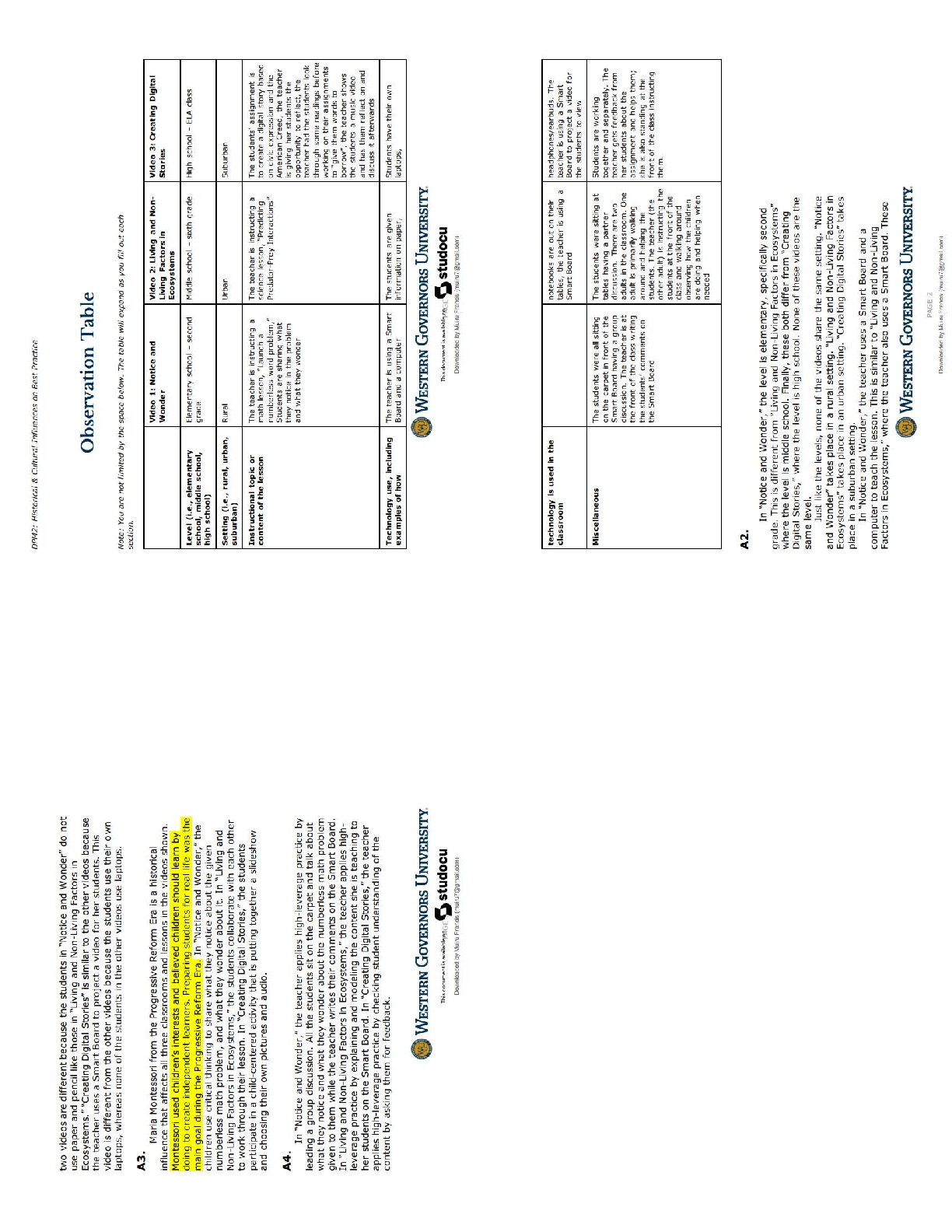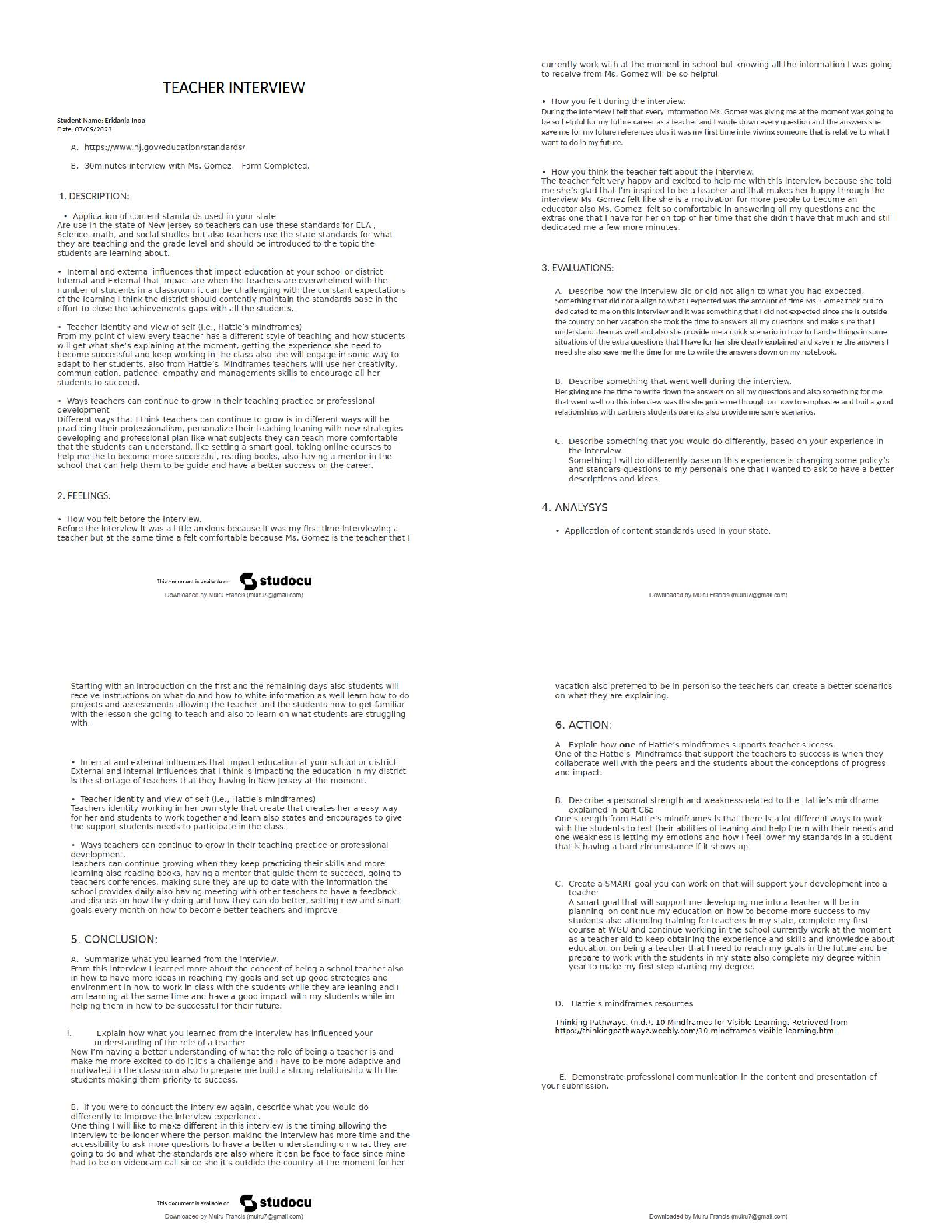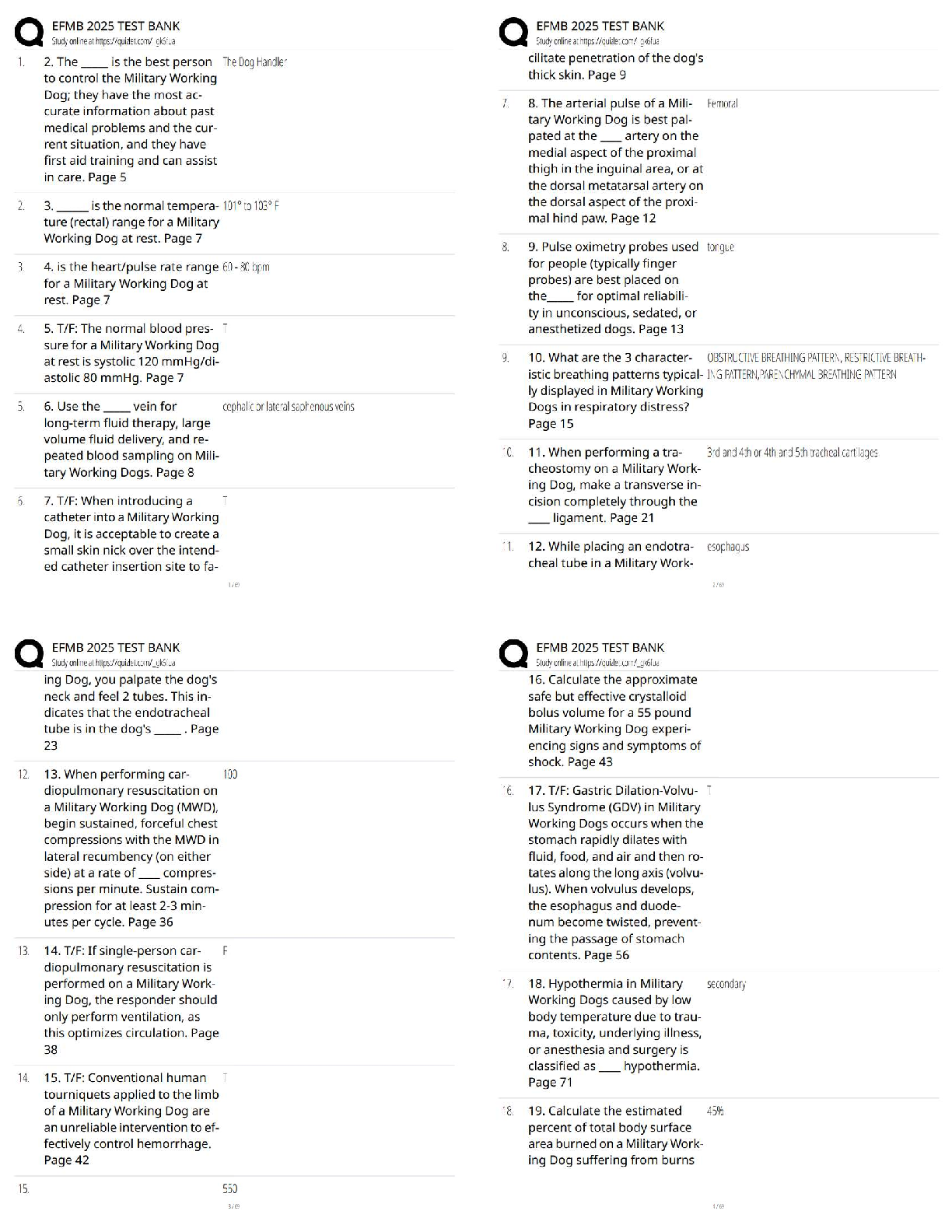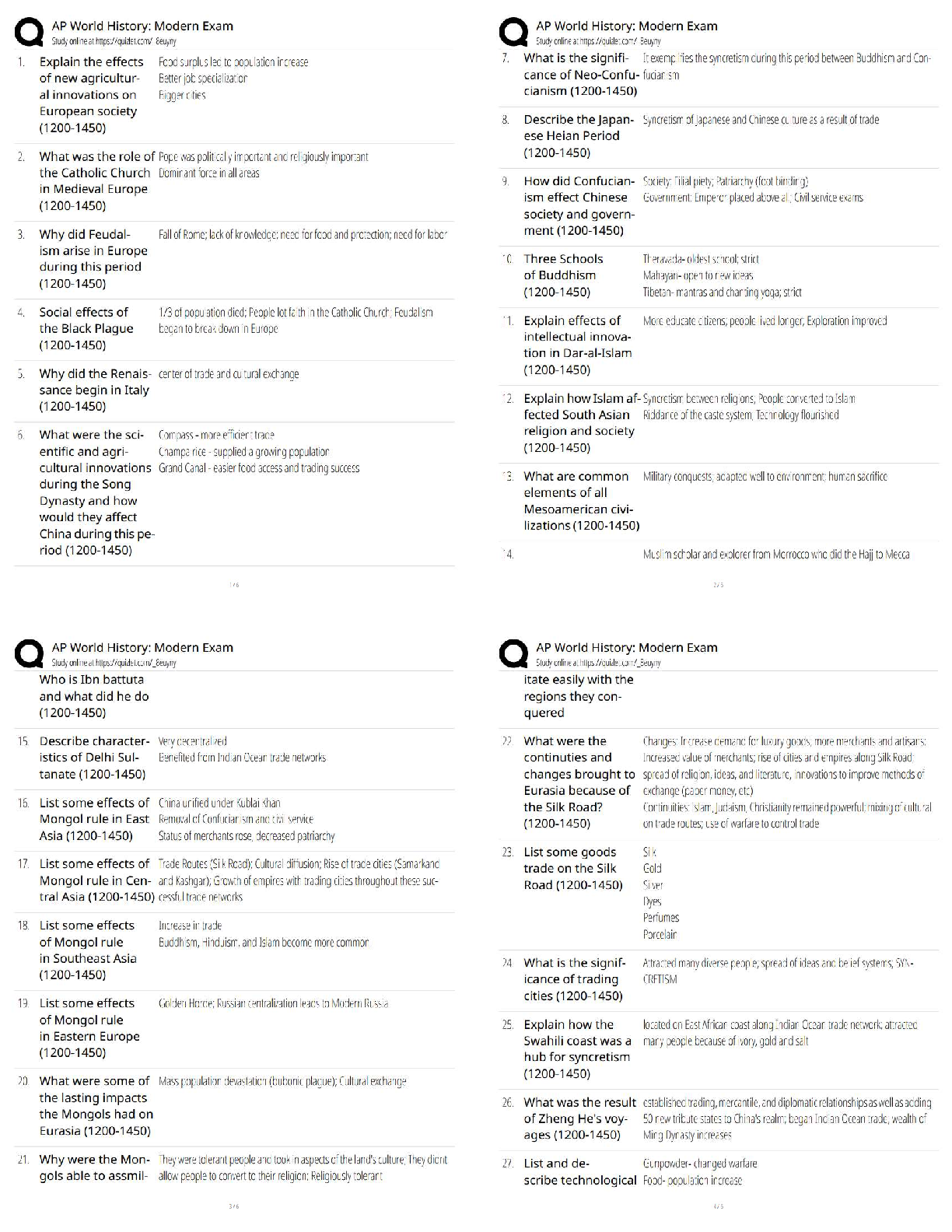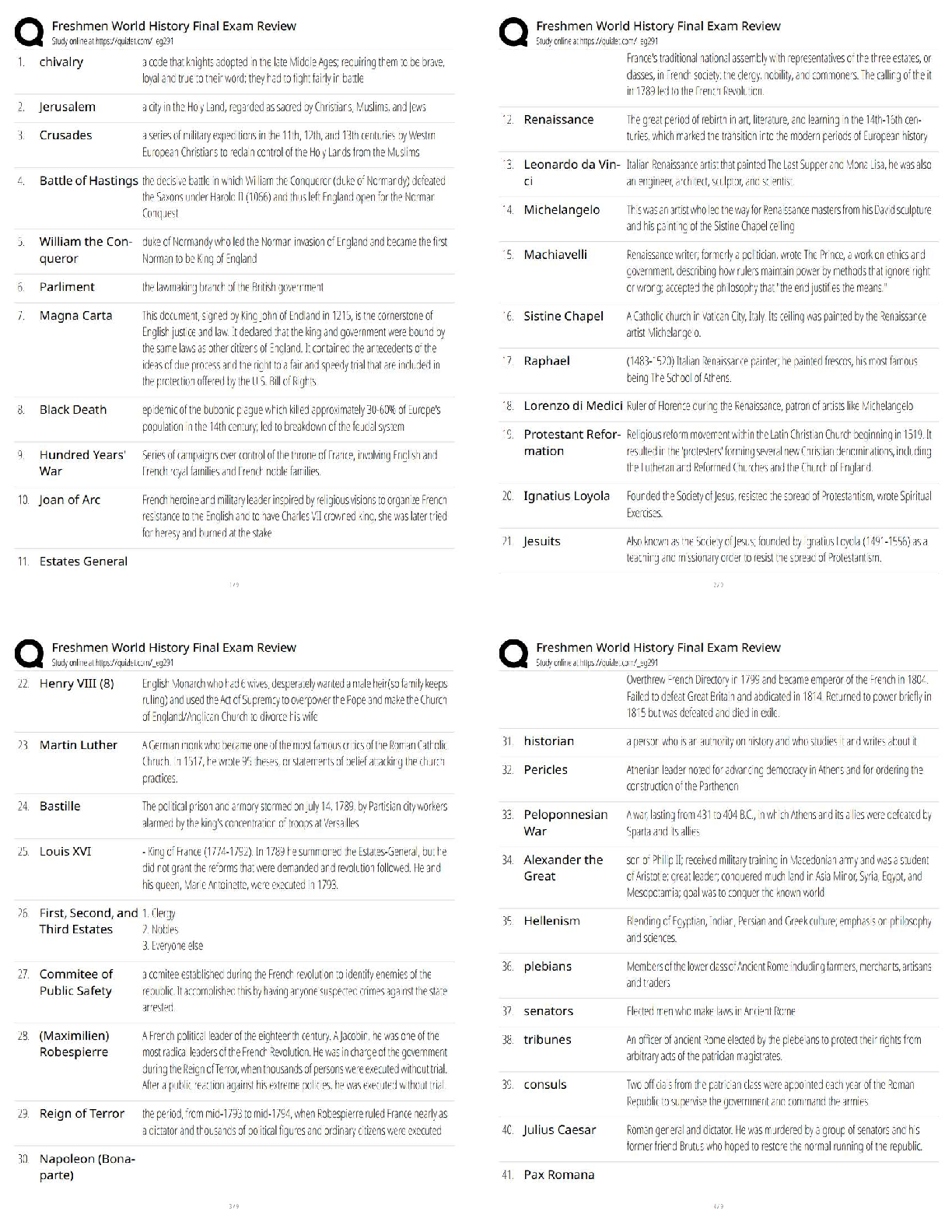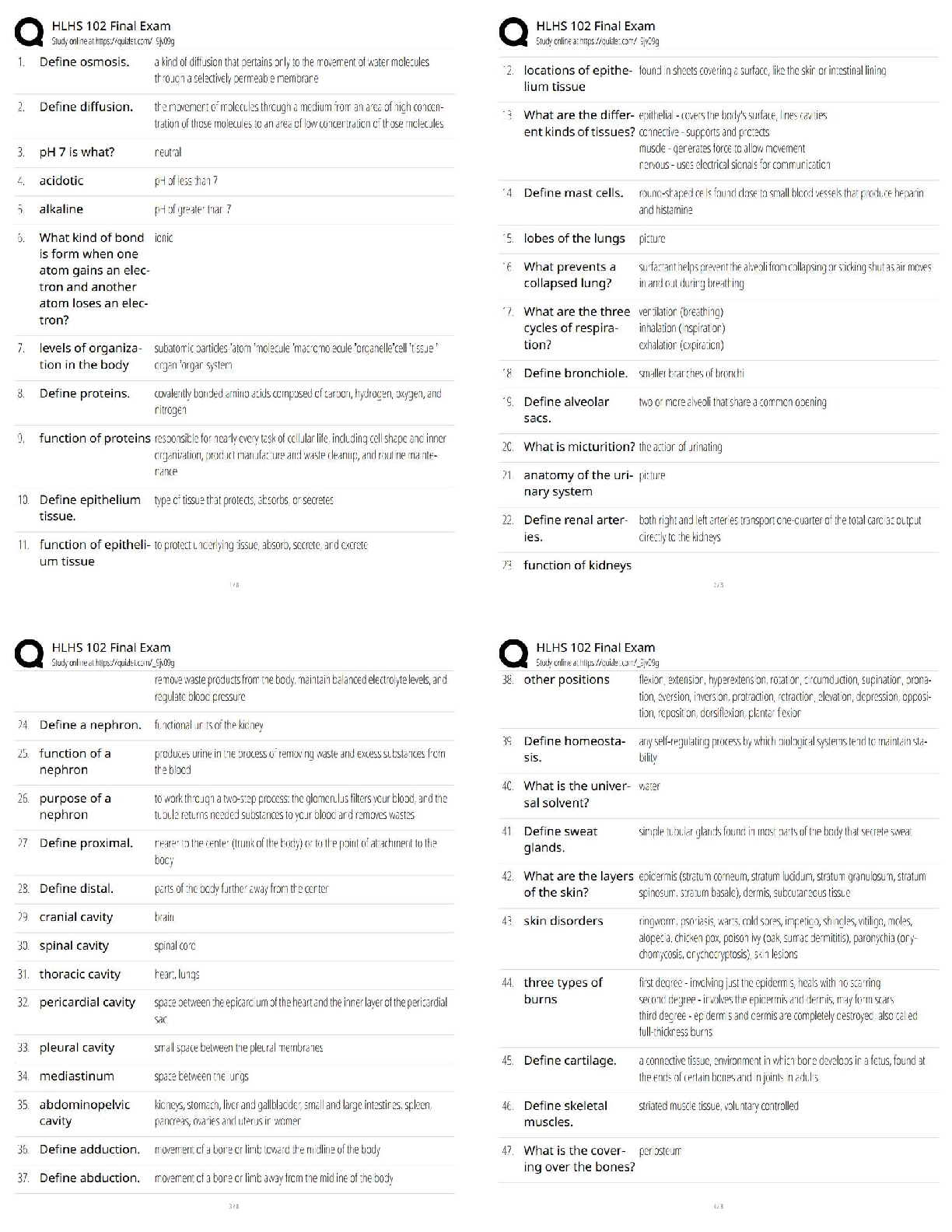Education > QUESTIONS & ANSWERS > STR Exam Questions and Answers Rated A (All)
STR Exam Questions and Answers Rated A
Document Content and Description Below
STR Exam Questions and Answers Rated A Asset-Based Approach ✔✔-An asset-based (or strengths-based) approach to education builds learning around a student's strengths and existing knowledge, rat ... her than focusing on what they lack. -the asset-based approach views diversity in thought, culture, and traits as positive assets that should be valued. -based on the idea that teaching to a student's strengths helps them to feel valued, build their confidence, and reach their full potential. The approach seeks to celebrate differences and eliminate biases that hold back certain student demographics, especially those with disabilities, students of color, and English language learners (ELLs). deficit-based approach: ✔✔focuses on students' shortcomings. instructional strategies that work well in an asset-based teaching approach: ✔✔-continually adjusting flexible groupings according to each child's current assessed knowledge and skills -providing students with freedom of choice and autonomy in their learning -drawing on prior knowledge that students bring into the classroom Dyslexia ✔✔-learning disorder that affects a student's ability to read, spell, write, and speak. -Students identified as having dyslexia typically experience some or all of the following characteristics: 1. difficulty with phonological awareness (including phonemic awareness) 2. difficulty reading words in isolation 3. difficulty decoding unfamiliar words 4. slow, inaccurate, or labored (without prosody) oral reading 5. difficulty spelling 6. limited reading fluency -As a result, these students often experience difficulties in reading comprehension and/or written expression and limited vocabulary growth due to limited reading experiences. Early Indicators for dyslexia: ✔✔1. Preschool: -Delayed speech -Difficulty with rhyming -Difficulty pronouncing words -Poor auditory memory of nursery rhymes and chants -Difficulty adding new words to vocabulary -Poor word retrieval skills (or inability to recall the right word) -Trouble learning and naming letters and numbers -Dislike of print (e.g. doesn't enjoy following along as a book is read aloud) 2. Kinder-1st: -Difficulty breaking words into smaller parts or syllables -Difficulty identifying and manipulating sounds -Difficulty remembering the names of letters and their sounds -Difficulty decoding single words (reading words in isolation) -Difficulty spelling words phonetically (the way that they sound) or remembering letter sequences of common words often seen in print 2nd-3rd: *Previously described behaviors still exist along with: -Difficulty recognizing common sight words -Difficulty recalling the correct sounds for letters and letter patterns in reading -Difficulty connecting speech sounds with appropriate letter combinations and omitting letters in words for spelling -Difficulty reading fluently -Difficulty decoding unfamiliar words -Reliance on picture clues, story theme, or guessing at words -Difficulty with written expression Dyslexia Instruction: ✔✔Should focus on structured, systematic, and explicit instruction in the following: -Phonological awareness (including phonemic awareness) - identifying and manipulating sounds -Sound-symbol association (alphabetic principle) - knowledge of the speech sounds and corresponding letter or letter combinations -Syllabication - rules related to the types and division of syllables -Orthography - the written spelling patterns and rules in a language -Morphology - the study of how morphemes (units of meaning) are combined to form words -Syntax - the set of principles regarding the sequence and function of words in a sentence -Reading comprehension strategies -Reading fluency Accommodation for Dyslexia Students: ✔✔To accommodate students with dyslexia, teachers can provide students with: -an opportunity to pre-read texts in small groups before reading aloud -additional time for class assignments and tests or reduced/shortened assignments (without eliminating concepts) -an alternative testing location or priority seating with reduced distractions -oral reading of directions or written materials -word banks -audiobooks -text to speech and/or speech to text -electronic spellers and/or electronic dictionaries -adaptive learning tools The most common co-occurring disorders with dyslexia: ✔✔attention deficit hyperactivity disorder (ADHD) and specific de [Show More]
Last updated: 3 years ago
Preview 1 out of 45 pages
.png)
Buy this document to get the full access instantly
Instant Download Access after purchase
Buy NowInstant download
We Accept:

Also available in bundle (1)
Click Below to Access Bundle(s)
.png)
STR BUNDLED EXAMS QUESTIONS AND ANSWERS WITH COMPLETE SOLUTIONS (LATEST 2022)
STR BUNDLED EXAMS QUESTIONS AND ANSWERS WITH COMPLETE SOLUTIONS (LATEST 2022)
By Nutmegs 3 years ago
$16
12
Reviews( 0 )
$10.00
Can't find what you want? Try our AI powered Search
Document information
Connected school, study & course
About the document
Uploaded On
Oct 29, 2022
Number of pages
45
Written in
All
Additional information
This document has been written for:
Uploaded
Oct 29, 2022
Downloads
0
Views
234





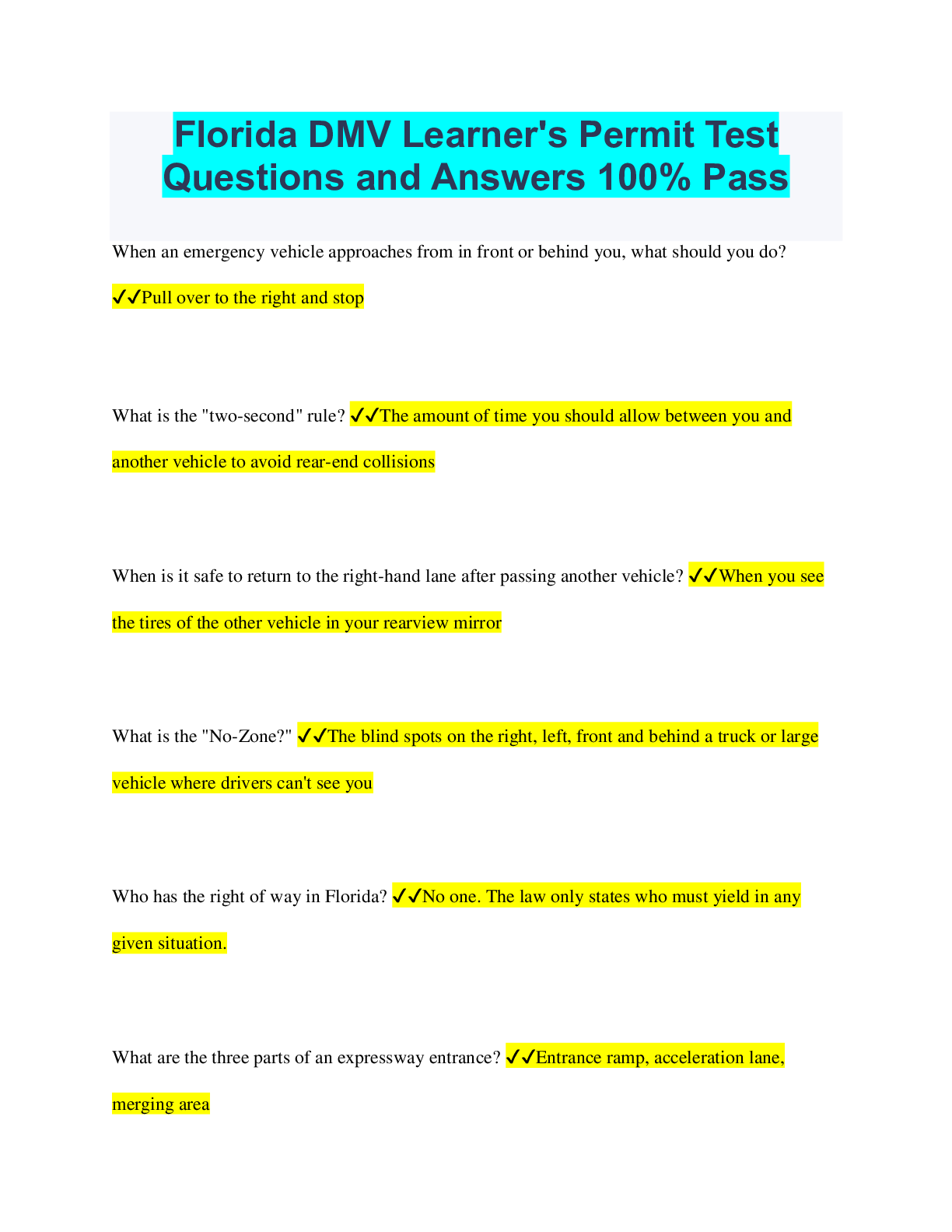
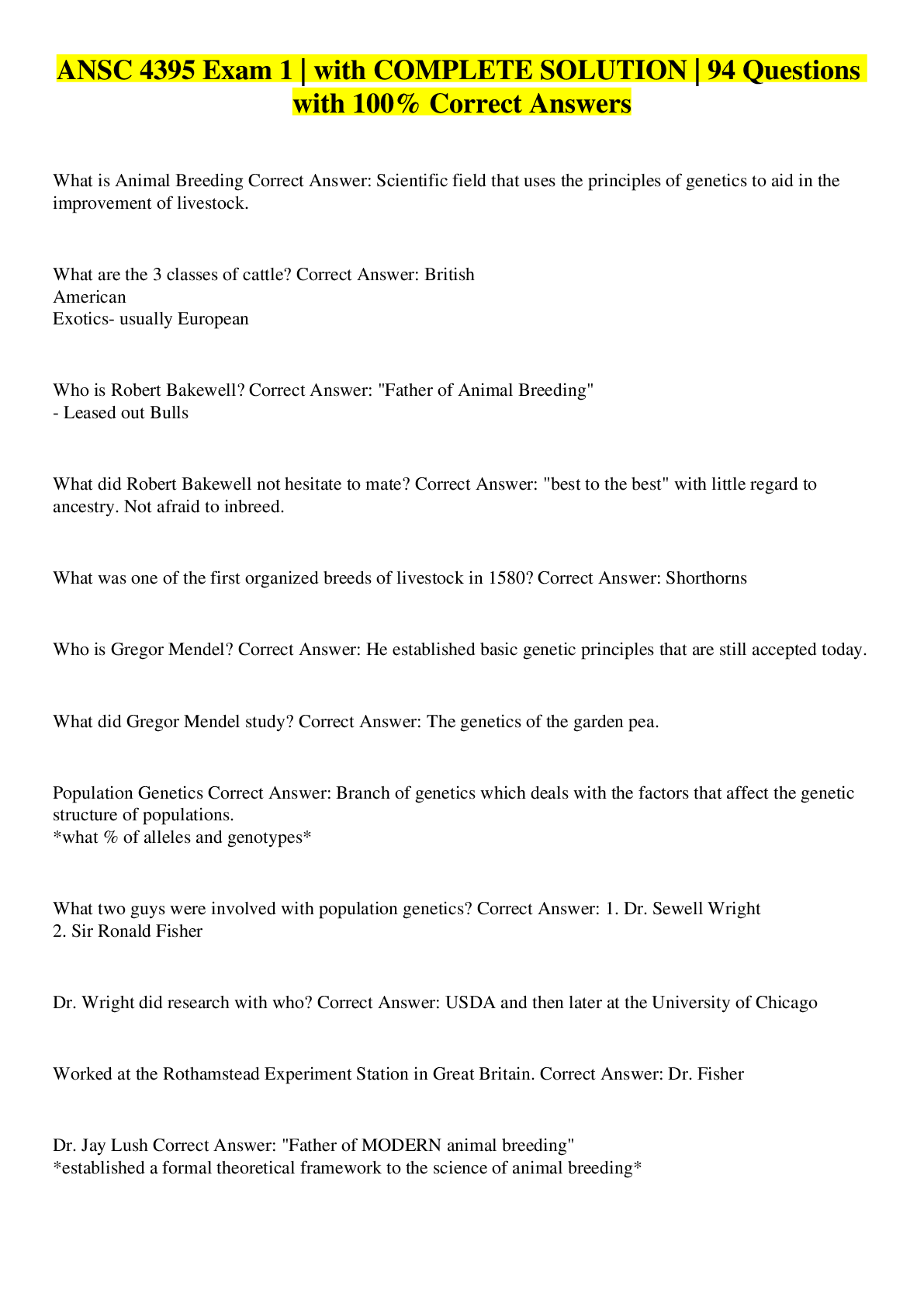

.png)





